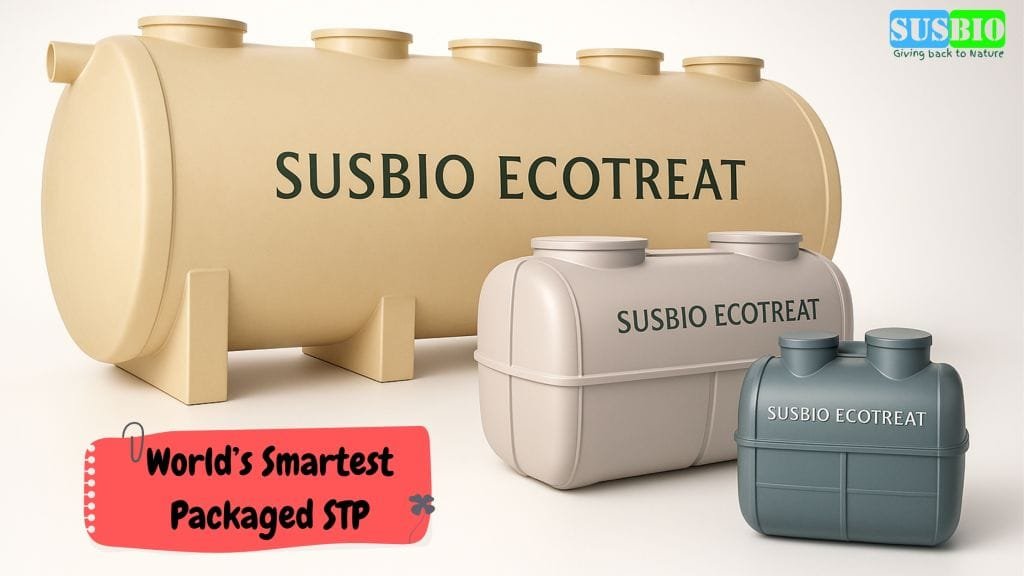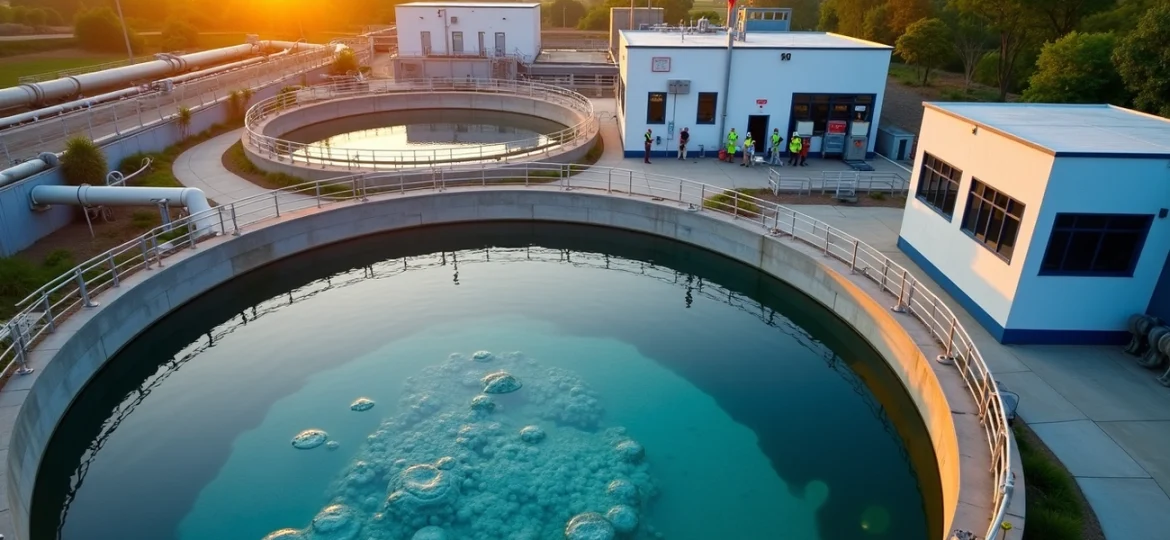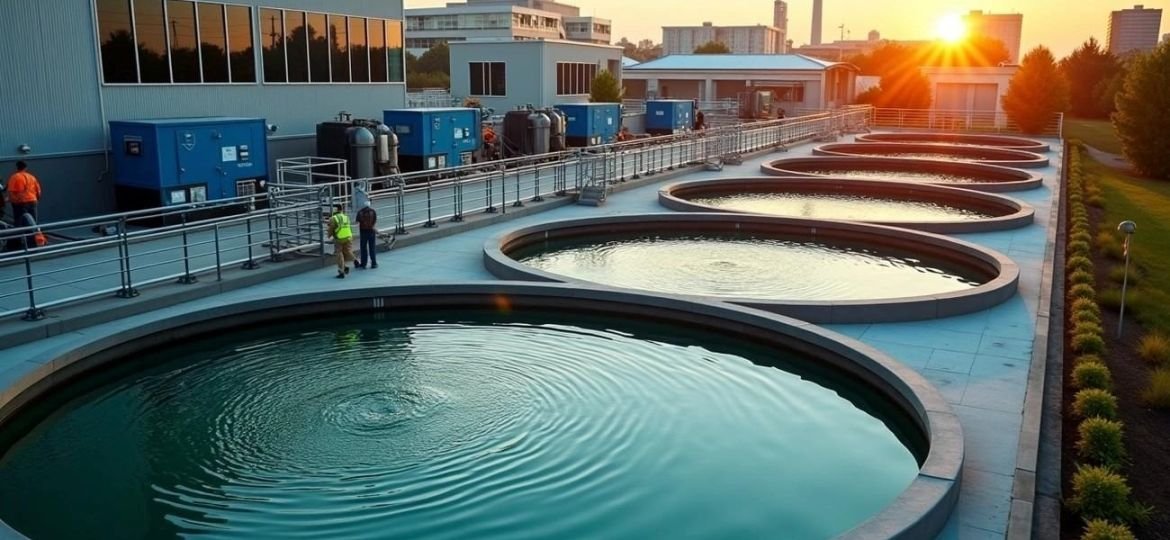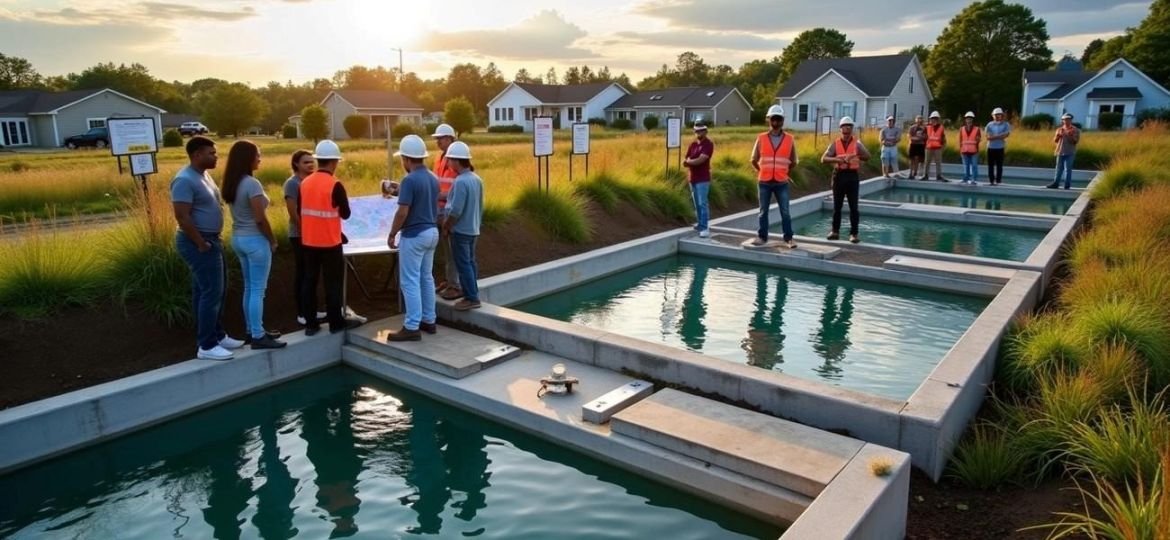Understanding Sewage Treatment and Its Importance in Educational Institutions
Educational institutions such as schools and colleges generate significant amounts of wastewater from restrooms, canteens, laboratories, and other facilities. Proper sewage treatment is essential to maintain hygiene, prevent contamination, and promote sustainable water management. A sewage treatment plant (STP) plays a crucial role in processing wastewater and making it safe for reuse or disposal. Implementing a wastewater treatment model ensures that the treatment process is efficient, effective, and environmentally friendly, supporting long-term sustainability in water management for these institutions.
What is a Sewage Treatment Plant and How Does it Work?
A sewage treatment plant (STP) is a system designed to treat wastewater by removing contaminants, solids, and harmful microorganisms. The treatment process typically involves three main stages:
Primary Treatment – Primary wastewater treatment involves the wastewater entering a settling tank where solid waste settles at the bottom, and lighter substances like oil and grease float on top.
Secondary Treatment – Biological processes, such as activated sludge or biofilm systems, break down organic matter. Microorganisms consume waste particles, converting them into harmless byproducts.
Tertiary Treatment – Advanced filtration and disinfection methods (such as UV treatment or chlorination) further purify the water, during tertiary wastewater treatment making it suitable for reuse or safe discharge into the environment.
After undergoing the wastewater treatment plant process, the treated water meets environmental standards and can be used for irrigation, flushing, or safely released into water bodies.
Why Do Schools and Colleges Need a Sewage Treatment Plant?
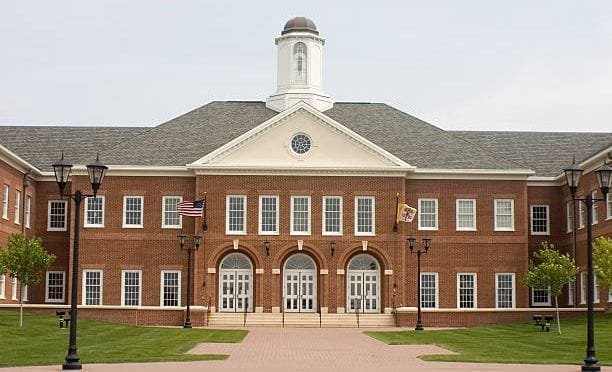
Health and Hygiene – A well-functioning STP prevents wastewater-related health hazards, ensuring a safe environment for students and staff.
Regulatory Compliance – Many schools and colleges, especially in non-sewered areas, are required to install STPs to meet environmental regulations.
Water Conservation – Treated wastewater can be reused for landscaping, flushing toilets, and other non-potable applications, reducing water wastage.
Environmental Protection – Proper wastewater treatment prevents pollution of nearby water bodies, preserving ecosystems and groundwater quality.
Cost Savings – Reusing treated water reduces dependency on freshwater supply, leading to lower utility costs for educational institutions.
Key Considerations When Choosing an STP for Schools and Colleges
Capacity and Size – The STP should be designed to handle the expected wastewater volume efficiently.
Technology Used – Choose between MBBR, SBR, MBR, or other advanced treatment technologies based on space availability and efficiency.
Maintenance Requirements – Opt for a low-maintenance system to minimize operational costs.
Compliance with Environmental Standards – Ensure that the system adheres to pollution control board regulations.
Installation Space – Schools and colleges often have limited space, making prefabricated and compact STP designs preferable.
Why SUSBIO ECOTREAT is the Best Choice for Schools and Colleges
When it comes to selecting an STP for educational institutions, SUSBIO ECOTREAT by SUSBIO stands out as the most efficient and reliable choice. With its advanced prefabricated design, dual treatment process, and energy-efficient operation, SUSBIO ECOTREAT ensures high-quality wastewater treatment effectively addressing domestic sewage water pollution with minimal maintenance. SUSBIO’s expertise in sewage treatment solutions makes it the top choice for schools and colleges looking for a cost-effective, sustainable, and hassle-free wastewater treatment system.
Frequently Asked Questions (FAQs)
1. Why do schools and colleges need a sewage treatment plant?
Schools and colleges produce wastewater from restrooms, canteens, and other facilities. Without proper treatment, this wastewater can cause health hazards and environmental pollution. An STP ensures safe disposal and possible reuse of treated water.
2. What happens if educational institutions do not treat their sewage?
Untreated sewage can contaminate groundwater, spread diseases, and lead to environmental pollution. Regulatory authorities may also impose penalties on institutions that fail to comply with wastewater treatment norms.
3. Can treated wastewater be reused in schools and colleges?
Yes, treated wastewater can be used for gardening, toilet flushing, and other non-drinking purposes, reducing freshwater consumption.
4. What are the common technologies used in school STPs?
Some common sewage treatment technologies include MBBR (Moving Bed Biofilm Reactor), SBR (Sequencing Batch Reactor), and MBR (Membrane Bioreactor). The choice depends on space, budget, and treatment efficiency.
5. How much maintenance does a school or college STP require?
Regular maintenance, including sludge removal, microbial culture checks, and filter cleaning, is essential for optimal performance. However, advanced STPs require minimal manual intervention.
Conclusion
Sewage treatment plants are vital for educational institutions to ensure hygiene, sustainability, and compliance with environmental regulations. By installing an STP, schools and colleges can manage wastewater efficiently, reduce water wastage, and contribute to a greener future. Similarly, a sewage treatment plant on ships plays a crucial role in maintaining hygiene and sustainability on board, ensuring efficient wastewater management in marine environments while minimizing the environmental impact, all through effective chemical wastewater treatment.
For the best sewage treatment solution, SUSBIO ECOTREAT offers a cutting-edge, energy-efficient, and cost-effective sewage treatment plant model tailored to the needs of schools and colleges. Choosing SUSBIO ensures a hygienic, compliant, and environmentally responsible approach to wastewater management, making it the best option for educational institutions. Additionally, SUSBIO’s solutions can be integrated with residential water treatment systems, ensuring the overall water quality in the building is optimized, safe, and sustainable for both educational and residential purposes. As a leading sewage treatment plant manufacturer in Gurgaon, SUSBIO provides reliable and innovative solutions for all your wastewater management needs.”


